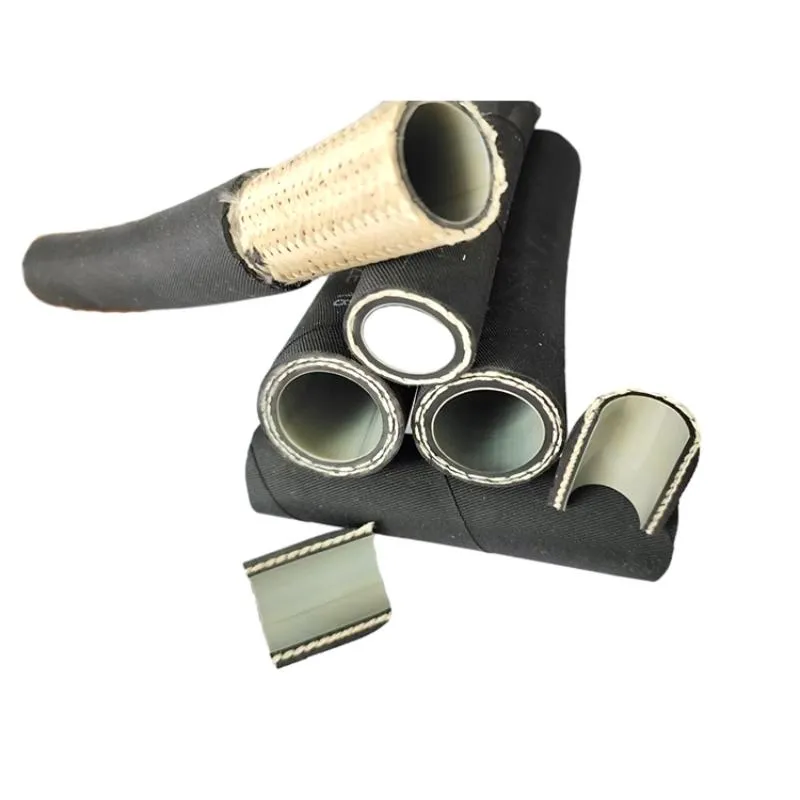Power Steering Pump Hose Replacement Guide for Optimal Vehicle Performance
ડીસેમ્બર . 11, 2024 02:06 Back to list
Power Steering Pump Hose Replacement Guide for Optimal Vehicle Performance
Understanding Power Steering Pump Hoses Importance and Maintenance
Power steering systems play a crucial role in modern automobiles, making the steering process smoother and easier. At the core of this system lies the power steering pump, and crucially, the hoses that connect this pump to other components. In this article, we will delve into the significance of power steering pump hoses, their function, potential issues, and maintenance tips to ensure your vehicle steers effortlessly.
The Role of Power Steering Pump Hoses
The power steering pump hoses are responsible for transporting hydraulic fluid from the pump to the steering mechanism. These hoses facilitate the transfer of power steering fluid, which aids in the reduction of steering effort required to turn the steering wheel. When you turn the steering wheel, the pump generates hydraulic pressure, which is conveyed through these hoses to the steering gear or rack, allowing for smooth and responsive steering.
Common Issues with Power Steering Pump Hoses
Though power steering pump hoses are designed to be durable, they can develop problems over time. One common issue is the degradation of the hose material, which can lead to leaks. These leaks typically occur at the hose's connection points or along the hose itself, where constant movement and high pressure can weaken the structure. Signs of a failing power steering hose include
power steering pump hose

1. Fluid Leaks Puddles or spots of reddish-brown fluid underneath your vehicle can indicate a leak in the power steering system. 2. Difficulty Steering If you notice increased resistance when turning the steering wheel, it may signal that the power steering pump isn’t receiving adequate fluid pressure. 3. Unusual Noises Whining or groaning sounds when steering can suggest low fluid levels due to a leak, which can lead to further issues if not addressed.
Maintenance and Care
To avoid significant problems with your power steering pump hoses, regular maintenance is essential. Here are some tips to keep your power steering system in good shape
- Regular Inspections Make it a habit to check the hoses visually during routine vehicle maintenance. Look for any signs of wear, cracks, or leaks. - Fluid Checks Regularly check your power steering fluid level. If it’s low, fill it to the recommended level, but also investigate the cause of the loss. - Use Manufacturer-Recommended Fluids Always use fluids that meet the specifications set out in your owner’s manual. Using incorrect fluids can cause damage to the hoses and pump. - Replace Worn Hoses Promptly If you detect any damage or leaks, replace the hoses immediately. Waiting too long can lead to more extensive damage to the entire power steering system.
Conclusion
The power steering pump and its connecting hoses are vital components that contribute to vehicle safety and ease of handling. Regular inspections and maintenance can prevent small issues from turning into major problems. If you experience any signs of trouble, don’t hesitate to consult a qualified mechanic. By staying proactive about your power steering system, you can ensure a smooth and comfortable driving experience for years to come. Remember, a well-maintained power steering system not only enhances your vehicle's performance but also contributes to your overall driving safety.
Latest news
-
Refrigeration Hose-HEBEI KEMO AUTO PARTS TECHNOLOGY CO., LTD|Low Permeability,Pulse-Resistance
NewsAug.01,2025
-
Refrigeration Hose-HEBEI KEMO AUTO PARTS TECHNOLOGY CO., LTD|Technical Specifications, Industrial Applications
NewsAug.01,2025
-
Refrigeration Hose - Hebei Kemao Auto Parts | Low Permeability&Pulse-Resistant
NewsAug.01,2025
-
Refrigeration Hose-HEBEI KEMO AUTO PARTS TECHNOLOGY CO., LTD|Efficient Fluid Transfer&Durable Performance
NewsJul.31,2025
-
Premium SAE J30R9 Fuel Hose for Durability
NewsJul.31,2025
-
Refrigeration Hose-HEBEI KEMO AUTO PARTS TECHNOLOGY CO., LTD|Low Permeability&Ozone Resistance
NewsJul.30,2025
